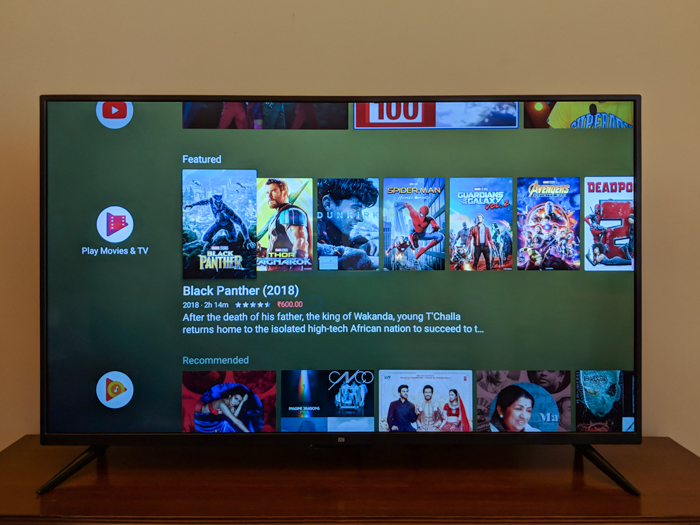
Xiaomi’s second gen Mi TVs launched in India a few weeks back, and we’ve been putting the 49-inch 4A Pro through its paces. With some surprises and a bit more polish, the Mi TV 4A Pro 49-inch looks like it has perfected the winning formula. Follow along for our full review.
Design
While the 55-inch flagship television from Xiaomi opts for barely there bezels and a razor slim profile, Mi TV 4A 49 Pro takes a more practical approach to design. The bezels are larger, so is the general thickness. Now, these things might matter to give context but do not make a difference in actual utility. The TV looks pretty damn good.
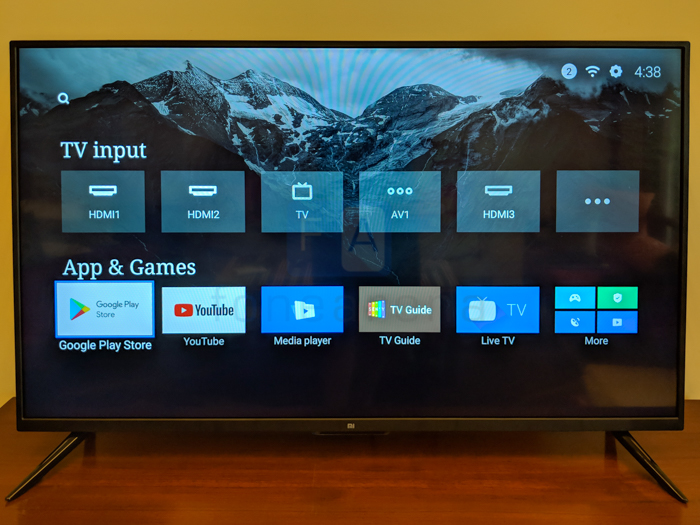
The construction is all plastic and looks, feels robust. Close inspection reveals that the use of high-quality plastics instead of glass or aluminium is a way to reduce costs but that’s a trade-off that will likely be acceptable to the entire target user base. We do wish that the feet stands were metal instead of plastic but once put up, they held up just fine and did not give any cause for concern. You can of course use a wall mount.
 The port selection continues to be pretty good on the Mi TV 4A Pro. The television has 3 HDMI ports of which 1 is ARC capable in case you’re planning to use a soundbar. There are two parallel mounted USB ports and reaching the bottom port is a bit of a hassle, especially if you’ve got a thicker USB connector installed. Other ports include a composite input, antenna connector, S/PDIF port as well as an ethernet port.
The port selection continues to be pretty good on the Mi TV 4A Pro. The television has 3 HDMI ports of which 1 is ARC capable in case you’re planning to use a soundbar. There are two parallel mounted USB ports and reaching the bottom port is a bit of a hassle, especially if you’ve got a thicker USB connector installed. Other ports include a composite input, antenna connector, S/PDIF port as well as an ethernet port.
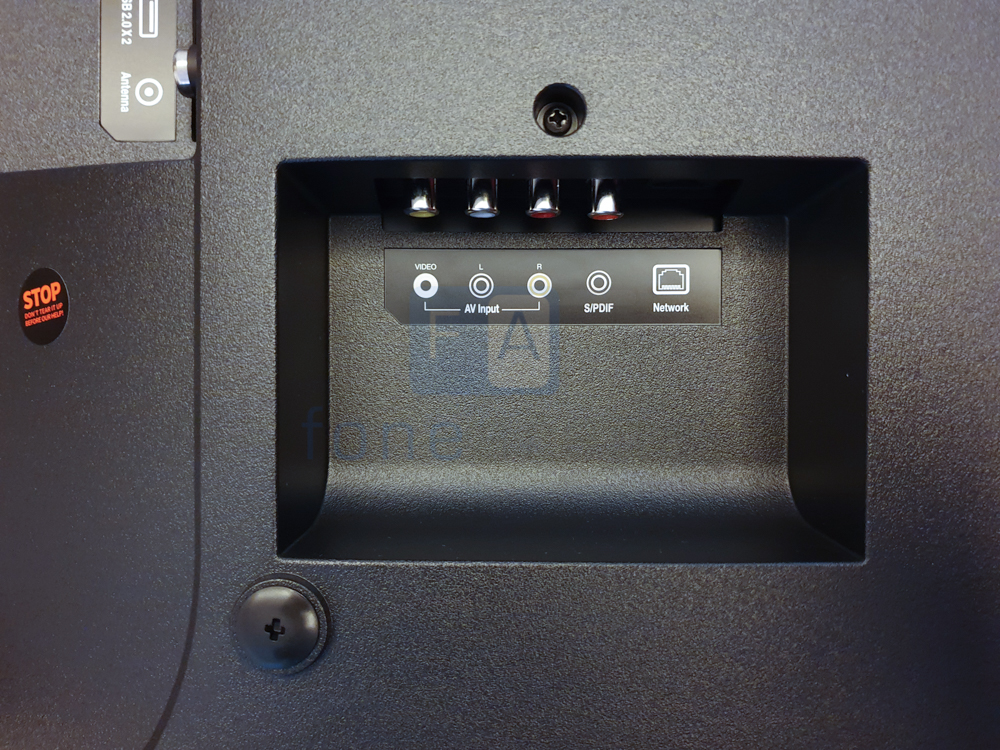
The presence of an S/PDIF port is perplexing on a budget television. This is a port used on relatively higher priced audio equipment and in all likely hood, someone buying a Mi TV is looking at a value for money set up where RCA or 3.5mm is the norm. Even basic speakers are an upgrade over the speakers in an LED Television but the choice of port means that you will have to buy a coaxial to 3.5mm connector instead of just plugging them in to your TV. Wireless connectivity options include Bluetooth and Wi-Fi. We tried the former with wireless headphones and the set up works well though there did seem to be a very slight amount of latency when we tried the same with Bluetooth speakers instead.
Display
As the title suggests, the display size here is 49 inches. The screen resolution is Full HD and the panel is HDR compatible. We used an Nvidia Shield as a source to test out content from Netflix and local media on the Mi TV 4A Pro 49. For standard definition content, the viewing experience was remarkably good. The panel goes very bright which is something we found slightly lacking on the 55-inch model. Viewing angles are really good and so are contrast levels. Colours are punchier than what we observed on the 55-inch Mi TV. Things do fall a bit flat when viewing HDR content. The panel goes quite a bit dimmer and there is a very discernible loss of details. Technically the TV does support HDR but after viewing a whole range of content with it, we’re inclined to say that you’ll be better off watching standard definition content on it.
Audio
Compared to the 55-inch Mi TV that we reviewed earlier on, the audio output is drastically better here. There’s a hint of bass too though the audio output continues to be optimized for voice. You’ll still benefit from full-size speakers or a soundbar paired to the TV of course.
Software
With the latest crop of Mi TVs, software is perhaps the biggest talking point. The entire platform has switched over from regular Android to Android TV and this brings with it quite a few changes. With the first generation televisions, Xiaomi had made a really big deal out of their PathWall OS. For good reason too since we found it to be a first-rate effort at integrating DTH services with a smart interface and online content. The switch to Android TV has opened up the experience massively and now gives users access to a wide range of apps as well as nifty features like Google Assistant access.
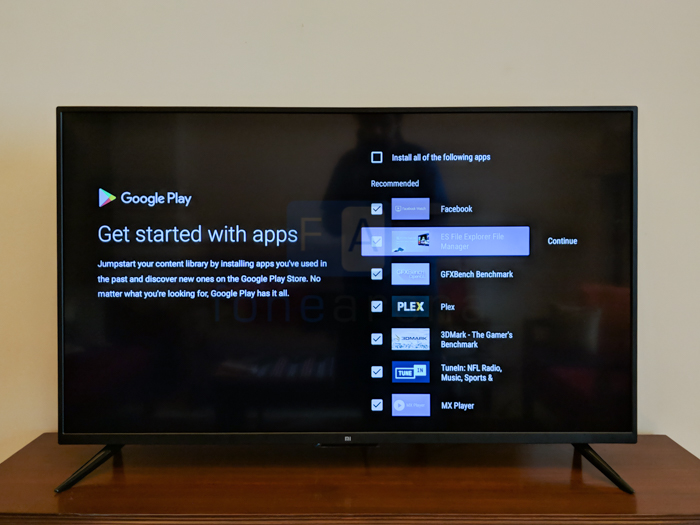
That’s not to say that company has given up on PatchWall. In fact, you’ll observe that the remote now ships with a dedicated Mi button that pops you into the familiar PatchWall no matter where you are in the interface.
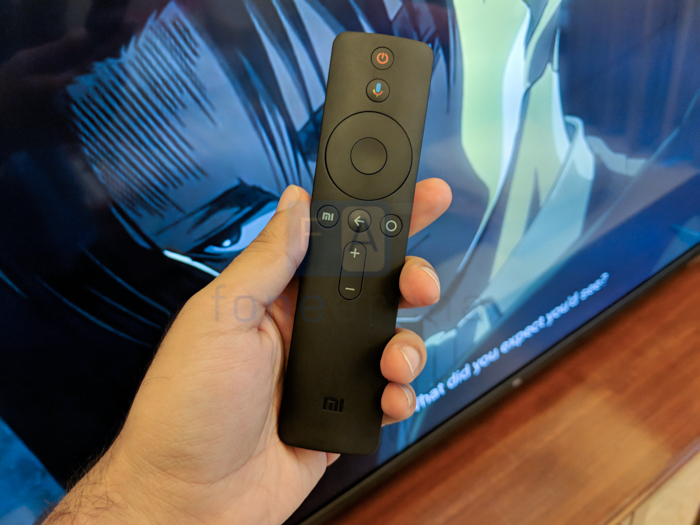
Now, the latest Android Oreo update brought with it a revised interface that is surprisingly similar to PatchWall in its approach. The former works only with online sources of course while the latter is able to enhance the entire DTH watching experience while adding internet based functionality like smart search, channel guides and more. Further, PatchWall integrates with a fair few Indian streaming services too including Hotstar, Sony Liv, Voot, TVF and more. Netflix and Amazon Prime remain elusive but at least the latter has been promised on the platform soon.
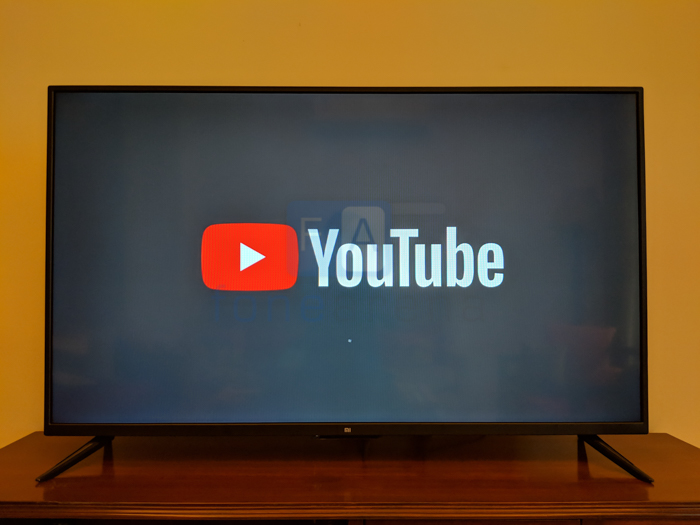
With the switch to Android TV though, you get access to a whole range of applications outside those whitelisted by Xiaomi. The biggest advantage most people will benefit from is the presence of a proper YouTube app instead of having to fire up the browser. Add to that apps like Kodi, VLC Player as well as Google Cast support. What you still won’t get is Netflix even over Google Cast. You’ll just have to wait for Xiaomi to work it out with their partners.
Like all Android TVs, the remote on the Mi TV too includes a button and mic to pull up Google Assistant. You can use this to issue commands and search for YouTube videos, movies on the Play Store. Xiaomi has done a brilliant job of tying PatchWall into the Google Assistant and this is what really elevates the experience in our opinion. Want to watch your favorite TV channel? Now, you can use voice commands to get there. Perhaps in the mood for movies by your favorite actor? Just ask the assistant for movies by the actor and it will use the PatchWall integration to show you your options. Its not perfect and there are times when it doesn’t work but these are teething issues for smart assistants in general. This is one of the first mass market attempts to unify platforms, both online and offline, in a single searchable interface and Xiaomi’s pulled off more than you’d imagine.
Remote Control
Xiaomi has always maintained that they wanted to simplify the TV watching experience. The first gen accomplished a lot and now with the switch in platform, Xiaomi is once again ahead of the curve. Integrating DTH using a USB to Infrared cable really was a masterstroke and so was the simple yet powerful universal remote.
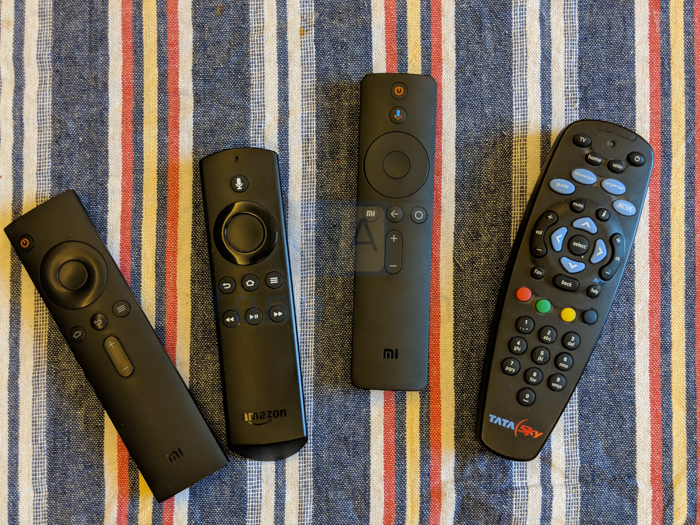
Above, you’ll see the first gen Mi TV remote, the remote for the Fire Stick, Mi TV 4A and Tata Sky. The remote on the Mi TV 4A removes the need for both the Fire TV remote using HDMI CEC as well as Tata Sky and other DTH providers by issuing commands over infrared. The remote now gets a button to pull up Google Assistant as well as a microphone. Meanwhile, in the center you get a back button flanked by keys for PatchWall and to jump to the Android TV interface respectively. The remote looks and feels great in the hand and since it works over Bluetooth, there’s no line of sight requirement. A nice addition would’ve been a 3.5mm audio jack to listen to TV audio over wired headphones, but we can live without it.
Conclusion
The Mi TV 4A Pro 49-inch is a great television. More than the panel itself here though, it is impressive to see the amount of thought that Xiaomi is putting into the platform. With a cohesive vision, Xiaomi has done a great job of bridging online and over the air media within a simple and easy to use interface. Indeed, PatchWall is a piece of software your grandparents could use and master.
 Coming to the hardware, the panel isn’t bad at all as long as you stick to standard definition content. HDR content is a miss but honestly, you get what you pay for. Priced at Rs. 29,999, the Mi TV 4A 49 offers tremendous value for money. The TV will perfectly serve your needs if you watch a lot of DTH content, YouTube and Hotstar. Netflix fans, please look elsewhere! It is available from Amazon.in and Mi.com.
Coming to the hardware, the panel isn’t bad at all as long as you stick to standard definition content. HDR content is a miss but honestly, you get what you pay for. Priced at Rs. 29,999, the Mi TV 4A 49 offers tremendous value for money. The TV will perfectly serve your needs if you watch a lot of DTH content, YouTube and Hotstar. Netflix fans, please look elsewhere! It is available from Amazon.in and Mi.com.
